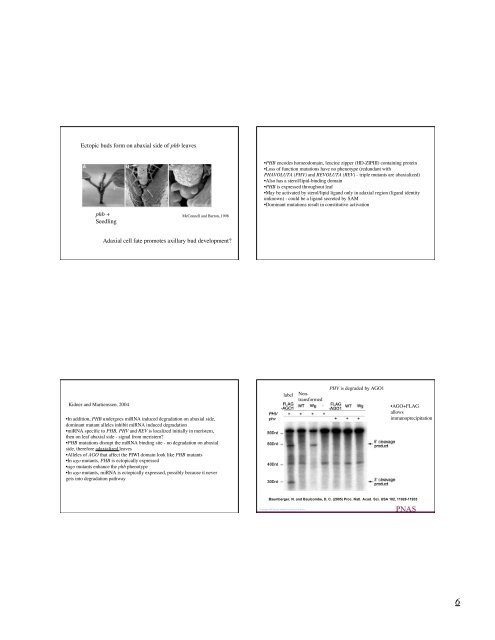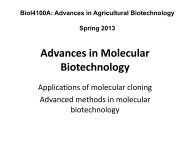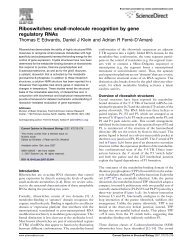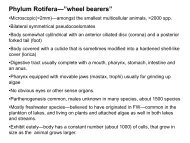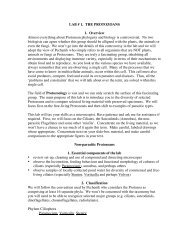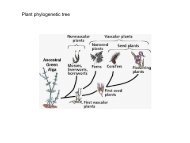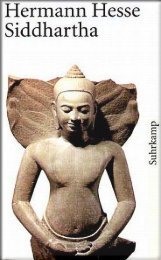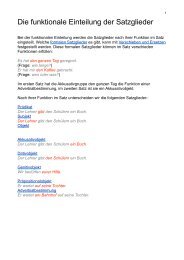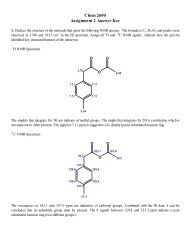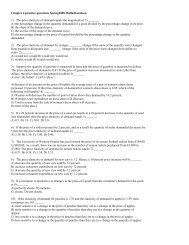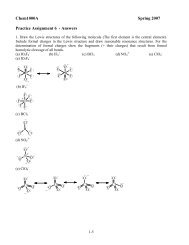Leaf has 3 axes:1) proximodistal, 2) centrolateral, 3) ab-adaxial ...
Leaf has 3 axes:1) proximodistal, 2) centrolateral, 3) ab-adaxial ...
Leaf has 3 axes:1) proximodistal, 2) centrolateral, 3) ab-adaxial ...
You also want an ePaper? Increase the reach of your titles
YUMPU automatically turns print PDFs into web optimized ePapers that Google loves.
Ectopic buds form on <strong>ab</strong>axial side of phb leaves<br />
phb +<br />
Seedling<br />
McConnell and Barton, 1998<br />
•PHB encodes homeodomain, leucine zipper (HD-ZIPIII) containing protein<br />
•Loss of function mutations have no phenotype (redundant with<br />
PHAVOLUTA (PHV) and REVOLUTA (REV) - triple mutants are <strong>ab</strong>axialized)<br />
•Also <strong>has</strong> a sterol/lipid-binding domain<br />
•PHB is expressed throughout leaf<br />
•May be activated by sterol/lipid ligand only in <strong>adaxial</strong> region (ligand identity<br />
unknown) - could be a ligand secreted by SAM<br />
•Dominant mutations result in constitutive activation<br />
Adaxial cell fate promotes axillary bud development?<br />
Kidner and Martienssen, 2004<br />
•In addition, PHB undergoes miRNA induced degradation on <strong>ab</strong>axial side,<br />
dominant mutant alleles inhibit miRNA induced degradation<br />
•miRNA specific to PHB, PHV and REV is localized initially in meristem,<br />
then on leaf <strong>ab</strong>axial side - signal from meristem?<br />
•PHB mutations disrupt the miRNA binding site - no degradation on <strong>ab</strong>axial<br />
side, therefore <strong>adaxial</strong>ized leaves<br />
•Alleles of AGO that affect the PIWI domain look like PHB mutants<br />
•In ago mutants, PHB is ectopically expressed<br />
•ago mutants enhance the phb phenotype<br />
•In ago mutants, miRNA is ectopically expressed, possibly because it never<br />
gets into degradation pathway<br />
l<strong>ab</strong>el<br />
Nontransformed<br />
PHV is degraded by AGO1<br />
•AGO+FLAG<br />
allows<br />
immunoprecipitation<br />
Baumberger, N. and Baulcombe, D. C. (2005) Proc. Natl. Acad. Sci. USA 102, 11928-11933<br />
Copyright ©2005 by the National Academy of Sciences<br />
6


